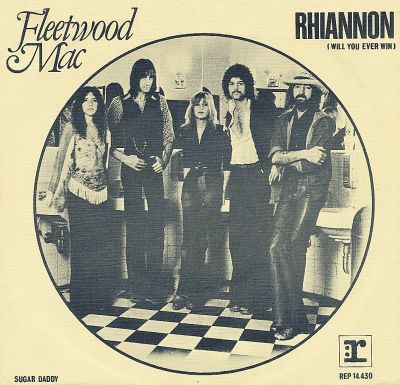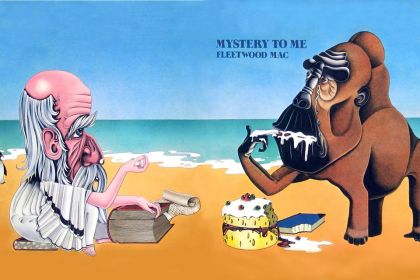SONGWRITER
Rhiannon: The Fleetwood Mac song that made the list of popular girls' names

Fleetwood Mac's Rhiannon single cover
Rhiannon is one of the best-known Fleetwood Mac tracks originally recorded for their 1975 eponymous album and released as a single the following year. The song was composed by the rock duo Buckingham Nicks before both members Stevie Nicks and Lindsey Buckingham joined Fleetwood Mac.
According to Stevie Nicks, she discovered the character of Rhiannon in the novel Triad by Mary Bartlet Leader. After writing the lyrics, Nicks learned that Rhiannon was a Welsh given name originating from the medieval story collection of the Mabinogion.
There Rhiannon appears as the Welsh form of Epona, the Gaulish goddess of horses, and Macha, the Irish war goddess also situated with horses. As one of the tales goes, Rhiannon marries King Pwyll but is later falsely accused of taking the life of her infant son. For this, she was sentenced to "work" as a horse by taking visitors to the king's court on her back. Another version describes her punishment as having to wear donkey collars to show the world her unjustly earned "beastly" nature.
Following the overwhelming success of the Fleetwood Mac album, Rhiannon suddenly became the first choice for many newborn girls in the United States, becoming fairly common over the years. At its peak in 1977, the name ranked 418th among popular girls' names.
Listen to Rhiannon (2017 Remaster) by Fleetwood Mac:
Compositionally, Rhiannon follows the canons of tonal theory namely the Aeolian mode based on the natural minor scale. In the harmonic analysis of the song's chord chains, the scale degrees (denoted with Roman numerals) show the following progressions in A Aeolian:
- Am–F–Am–F or i–VI–i–VI;
- C–F–C–F or III–VI–III–VI.
Rhiannon is built around three chords, with the second progression using mediant and submediant major chords which gives the track a distinct major mood.
Although simple, the arrangement of the song focuses on the guitar hook and ends the hook's melody in a tonic by shifting the adjacent degrees of the natural minor scale: C–D–E–D–C–B–A.
Discover more songs composed in Aeolian minor mode and their harmonic analyses in the following articles:
- 8 songs to introduce Aeolian mode and natural minor scale
- 6 songs combining harmonic minor and Aeolian mode
- Butterflies and Hurricanes: piano intermezzo meets the chaos theory
- Golden Slumbers: lyrical origins of the famous Beatles lullaby
- Hypnotized: Fleetwood Mac's song about aliens
- Locomotive Breath: fine groove born from Jethro Tull's studio session
- Shaman's Blues: quintessential The Doors song refined their most controversial album
- I Shot the Sheriff: Burnin' spliff nearly destroyed Bob Marley's original recording
- Hero and Heroine: Strawbs lyrics that allegorize drug addiction through Greek mythology
- Bungle in the Jungle: early prog-rock hit vs the greatest boxing match



